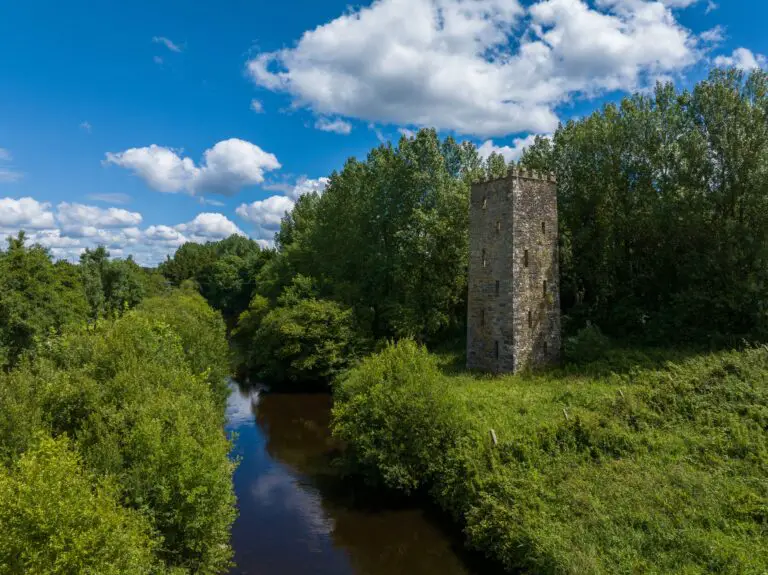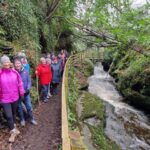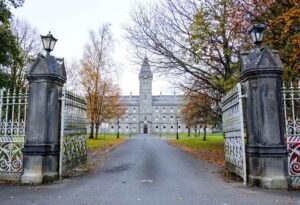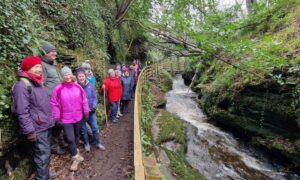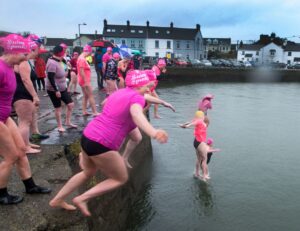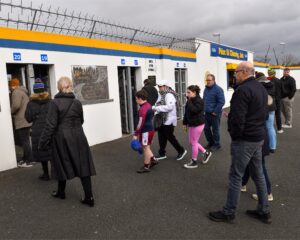The Old Water Tower on the banks of the Graney River on the Feakle Road out of Scariff. It was built to supply water to the Workhouse and is one of the stops on Walking the Way of the Famine. Photograph: Gabrian Van Houdt.
SCARIFF’S Harbour Festival will tell the story of the famine in East Clare.
A three-hour 6km guided tour, focusing on the catastrophic human events of the mid-nineteenth century, will highlight the often-unnoticed landmarks in and around the harbour village.
Located on Drewsborough Road, the Scariff Workhouse was designed to accommodate 600 people by English architect, George Wilkinson. Built in 1841, to a broadly standardised courtyard design, the living quarters were at the centre with segregated sleeping quarters to the sides. Roofed by ‘penny-green’ slates from Killaloe, so called because they had a tint of green and cost one penny each, the coffin house structure still stands at the side of the road.
Local historian Micheál Pearl will lead the tour with his brother Martin, he said, “This is a time to remember all those who suffered and died, who lived and loved, during the Famine of 1845. On this famine walk and at sites along the way, we will endeavour to re-enact the physical and emotional journey of some of those who trod the same path with little or no hope”. He acknowledged the permission and co-operation of the Grogan Family, on whose property the Old Workhouse stands.
Other famine landmarks include the elegant, sandstone Workhouse Water Tower on the Feakle Road and the Famine Memorial Graveyard, between Tuamgraney and Bodyke, which was opened in 1997. The workhouse cooking pot can be seen at the entrance and a large unused stone grinding wheel from the period.
To complement the Famine Walk, historian and genealogist, Jane Halloran Ryan will tell us why Drewsborough is called Drewsborough, why the road to Flagmount is known locally as the Norbury Line and will relate stories of colonels and doctors in Moynoe. Her talk at the Edna O’Brien Library on Saturday 3rd will focus on the Landlords and Landowners of East Clare and their influence on the locality and the legacy they left. It will bring alive, with on-screen visuals, the backstory of Scariff in the mid to late 19th and early 20th centuries.
In addition, she will provide free individual genealogy sessions on both Saturday and Sunday for people interested in pursuing their own family history. These will be especially helpful, not only for starters, but also for people who have found themselves meeting apparent search blocks along the way. Information on and access to relevant websites will be available. Pre-booking is required for genealogy sessions and Bus Tour of the Famine Way (Sunday only) – see festival programme on www.scariff.ie.

